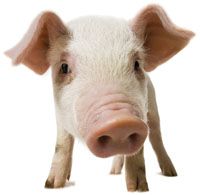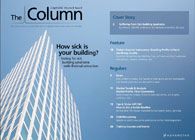Pork qualities
A recent study into the beneficial qualities of porcine haemoglobin has revealed some interesting results.

A recent study into the beneficial qualities of porcine haemoglobin has revealed some interesting results.1
Normally discarded as a by-product of the meat industry, the haemoglobin was hydrolysed using pepsin, AS1398 neutrase, trypsin, flavorzyme, papain and alcalase. The peptic hydrolysate exhibited the highest antioxidant activities out of all the hydrolysates and was separated using ultra filtration membranes and consecutively using a variety of chromatographic methods. Ultimately, a novel antioxidant peptide from porcine haemoglobin (APPH) was purified. APPH demonstrated higher lipid peroxidation inhibitory ability than α-tocopherol as a positive control (P
The study concluded that APPH would be a beneficial addition to functional food and pharmaceuticals, rather than labelled as a waste product.
1. Lei Yao et al., International Journal of Food Science & Technology, 47(1), 148–154 (2012).
This story originally appeared in The Column. Click here to view that issue.
Removing Double-Stranded RNA Impurities Using Chromatography
April 8th 2025Researchers from Agency for Science, Technology and Research in Singapore recently published a review article exploring how chromatography can be used to remove double-stranded RNA impurities during mRNA therapeutics production.
The Effect of Time and Tide On PFAS Concentrations in Estuaries
April 8th 2025Oliver Jones and Navneet Singh from RMIT University, Melbourne, Australia discuss a recent study they conducted to investigate the relationship between tidal cycles and PFAS concentrations in estuarine systems, and offer practical advice on the sample preparation and LC–MS/MS techniques they used to achieve the best results.












